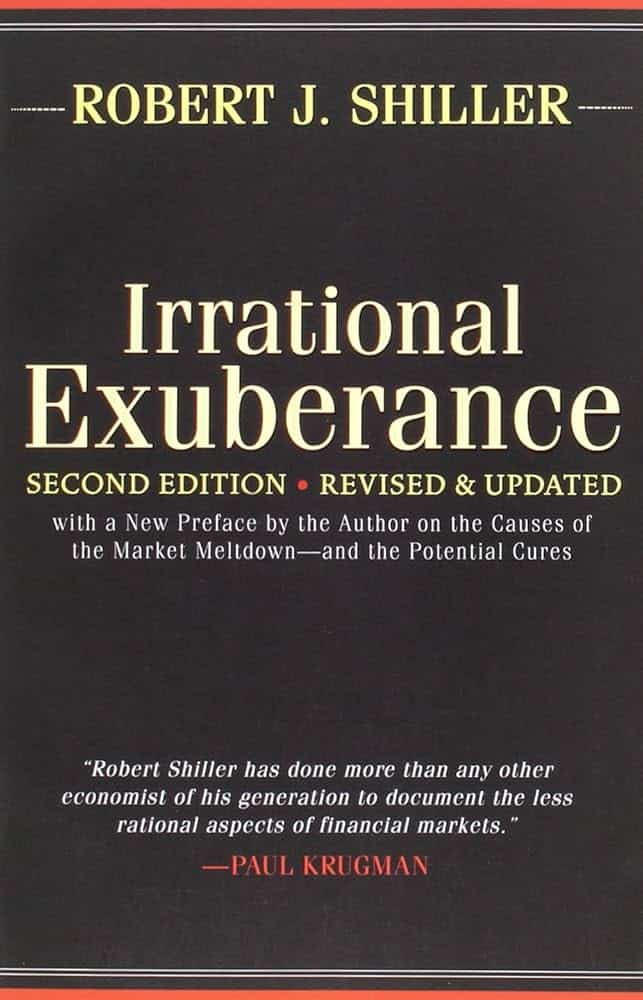Quick Overview
This review of "Irrational Exuberance" delves into the book’s key insights on evaluating a company's financial health. It explores practical techniques for analyzing balance sheets, income statements, and cash flow statements, providing both novice and experienced investors with the tools to make informed financial decisions. The book’s relevance in today’s market makes it an essential read for anyone looking to strengthen their financial analysis skills.
Target Audience
This book is specifically designed for:
- Finance Students: Those pursuing degrees in finance or accounting who need a deep understanding of financial statements.
- Professional Analysts: Financial analysts who regularly evaluate companies and require advanced techniques in statement analysis.
- Experienced Investors: Investors with a solid grasp of finance looking to enhance their ability to assess a company's financial health.
Key Lessons
- Understanding Financial Health: Learn how to evaluate a company's financial stability through its balance sheets, income statements, and cash flow statements.
- Advanced Ratio Analysis: Master the use of financial ratios to assess profitability, liquidity, and solvency.
- Industry Comparison: Discover how to compare financial performance across different companies and industries for better investment decisions.
- Risk Assessment: Gain insights into identifying potential risks and understanding their impact on financial performance.
Overview : Irrational Exuberance By Robert Shiller
-
Book Title: Irrational Exuberance
-
Author: Robert Shiller
-
Publication Date: 2000
-
price: $18.93
-
Pages: 392
Overview of the Book
"Irrational Exuberance," authored by Robert J. Shiller, is a groundbreaking work that explores the causes and consequences of speculative market bubbles, offering insights into the psychology of investors and economic dynamics. The book provides a detailed analysis of market volatility and investor behavior.
Introduction: A Landmark in Financial Literature
In the ever-evolving world of finance and investing, few books have left as lasting an impact as Robert J. Shiller's "Irrational Exuberance." This seminal work, first published in 2000 and now in its third edition, offers a profound exploration of market psychology, economic bubbles, and the often-unpredictable nature of asset pricing. Shiller, a Nobel laureate in Economics, presents a compelling case for why markets aren't always as rational as traditional theories suggest.
Book Summary: Unraveling Market Mysteries
"Irrational Exuberance" takes its title from a phrase coined by former Federal Reserve Chairman Alan Greenspan, using it as a springboard to dive deep into the psychological underpinnings of market behavior. Shiller argues that asset prices are not solely determined by economic fundamentals but are heavily influenced by human emotions, cognitive biases, and social dynamics.
Key themes explored in the book include:
- The role of psychology in driving market trends
- Historical patterns of speculative bubbles
- The impact of media and technology on investor behavior
- Policy implications of market irrationality
- Strategies for navigating volatile markets
Analysis of Themes: Bridging Theory and Practice
Behavioral Finance Insights
Shiller challenges the efficient market hypothesis, presenting evidence that markets are often swayed by irrational factors. He delves into concepts like herd behavior and overconfidence, illustrating how these psychological elements can lead to significant asset mispricing.
Historical Context
The book draws parallels between past and present market bubbles, from the 17th-century tulip mania to the dot-com boom of the late 1990s. This historical perspective underscores the recurring nature of speculative frenzies and the lessons we can glean from them.
Media and Technology
Shiller examines how the proliferation of financial news and the rise of digital platforms have amplified market narratives, contributing to both euphoria and panic. This analysis is particularly relevant in today's age of social media-driven market movements and cryptocurrency hype cycles.
Policy Implications
The book advocates for a more proactive approach by central banks and regulatory bodies in addressing asset price inflation. Shiller's insights have gained traction following recent financial crises, influencing discussions on market regulation and monetary policy.
Writing Style: Accessible Yet Rigorous
One of the book's strengths is Shiller's ability to present complex economic concepts in an accessible manner. He combines empirical evidence with theoretical analysis, using charts and data to illustrate market volatility and valuation discrepancies. This approach makes "Irrational Exuberance" valuable for both financial professionals and lay readers interested in personal finance and investing.
"The market is not well anchored by fundamentals. People do not know how to value the market. They are just playing games with numbers." - Robert J. Shiller
Strengths and Weaknesses: A Balanced Perspective
Strengths:
- Comprehensive analysis of market psychology
- Blend of historical context and contemporary relevance
- Practical advice for investors
- Updated editions addressing recent market events
Weaknesses:
- Some critics argue it underplays the role of economic fundamentals
- Certain sections may be too technical for casual readers
Comparison to Other Works: A Standout in Financial Literature
Irrational Exuberance" stands alongside other influential works in behavioral finance, such as Daniel Kahneman's "Thinking, Fast and Slow" and Nassim Nicholas Taleb's "The Black Swan." While these books also explore cognitive biases and market unpredictability, Shiller's work uniquely focuses on the specific phenomenon of asset bubbles and their broader economic implications.
Compared to more traditional investment books like Benjamin Graham's "The Intelligent Investor," Shiller's approach offers a more psychological perspective on market trends. It complements Graham's value investing principles by explaining why markets may deviate from fundamental values.
Highlights from Irrational Exuberance By Robert Shiller
- Irrational exuberance: Explores the psychological factors driving market bubbles.
- Market cycles: Highlights the recurrence of booms and busts in financial markets.
- Stock market volatility: Discusses how investor emotions and speculation affect market prices.
- Real estate bubbles: Analyzes the housing market's role in economic instability.
- Economic forecasting: Critiques the limitations of traditional models in predicting market trends.
- Investor behavior: Emphasizes the importance of understanding irrationality in making investment decisions.
Conclusion: Essential Reading for the Modern Investor
"Irrational Exuberance" remains a crucial read for anyone seeking to understand the complexities of financial markets. Shiller's insights are particularly relevant in today's fast-paced, technology-driven market environment, where trends like cryptocurrency speculation and meme stock phenomena demonstrate the ongoing relevance of his theories.
For investors looking to navigate the often-turbulent waters of the stock market, real estate, or emerging asset classes, this book provides invaluable perspective. It encourages a balanced, long-term approach to investing while fostering awareness of the psychological factors that can lead to market extremes.
If you're ready to deepen your understanding of market behavior and improve your investment strategy, "Irrational Exuberance" is a must-read. Click the link below to get your copy and start your journey towards more informed financial decision-making.
Get "Irrational Exuberance" on Amazon
(Note: This is an affiliate link. If you make a purchase, we may earn a commission at no additional cost to you. In conclusion, this article has provided an overview of the topic at hand.





